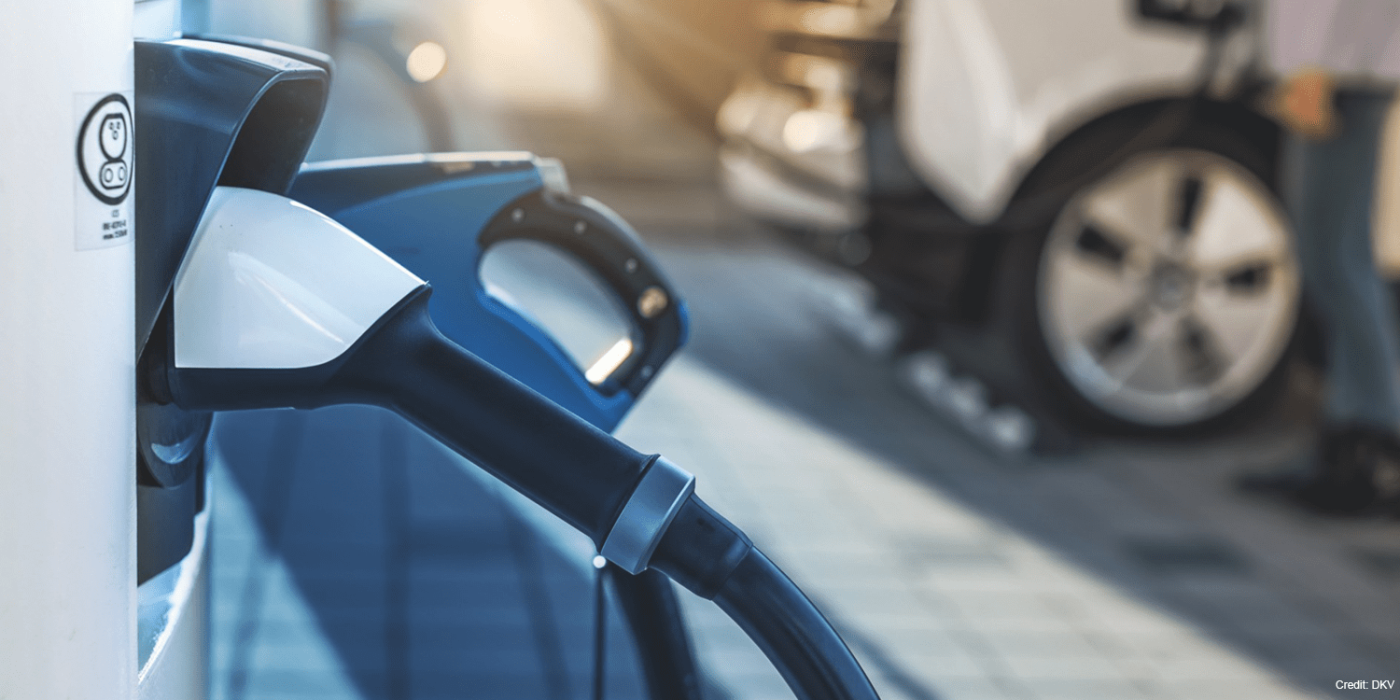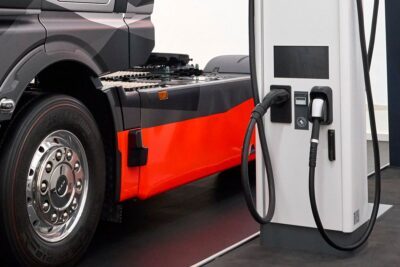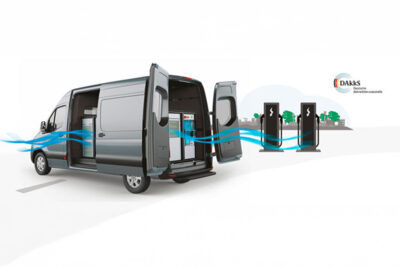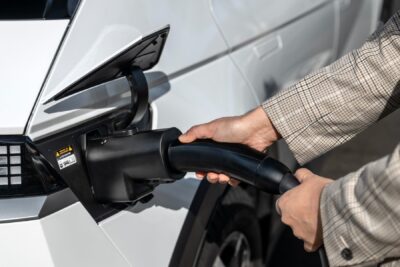Deutschlandnetz: Germany to tender 1,000 fast-charging parks
Germany wants to install over a thousand fast-charging parks nationwide and has readied two billion euros to do so. The tenders will go out this September so we take a look ahead at what it takes to bid to become a part of ‘Deutschlandnetz’.
* * *
A quick reminder of the basics: The German “Schnelladegesetz” (SchnellLG) or the ‘Fast Charging Act’ includes a call to install over a thousand federal fast-charging parks nationwide. The media soon named those “Bundes-Ladeparks” after the federal government ratified the bill in May this year. It also tasked the Ministry of Transport (BMVI) to plan, promote, coordinate and monitor the development of said high-power-charging infrastructure. Now, the Transport Ministry and agencies have detailed the tender process, including a controversial price cap.
With this set, the Ministry of Transport’s so-called ‘Deutschlandnetz’ (German network) will come with some changes in the fine print of the outline the Ministry had issued in early June. Germany’s Minister for Transport, Andreas Scheuer, back then announced that in future, it was to be “possible to reach the nearest fast-charging point within ten minutes – in the city, on rural roads and the highway.” To actually reach this comprehensive coverage, the Ministry is ready to spend two billion euros in funding. BMVI also declared that it wanted “to take into account the interests of the existing market, prevent monopolistic positions and enable small and medium-sized enterprises to participate in the calls for tenders.”
Location, location, location
As predicted by several organisations, it is all about location. It is the most difficult factor that the Ministry wants to solve through AI and a lottery. Two, in fact, one for sites along the Autobahn and the other for regional charge park sites. The planned tenders now include 23 lots in six regions, up from 18, within 900 so-called “search areas” (“Suchräume”) in rural and urban areas. Note, it is the government seeking to install fast-charging within the designated areas, yet the bidders must find an applicable site within said areas. The Ministry reckons that regionally, 8,800 charge points will be added to Deutschlandnetz on charging parks of size S, M, L, and XL with 4, 8, 12, and 16 charge points, respectively. As a given, charging powers of up to 300 kW must be enabled on-site.
The Ministry and its NOW agency applied an algorithm using data from a location tool NOW set up to find the search areas – around half are in urban areas, the other half in rural areas – we get to the motorway lots separately. The AI included existing charging poles as well as expected demand and expansion through 2025. “We don’t want to put a new site in front of a good, existing site,” says Johannes Pallasch, Head of Nationale Leitstelle Ladeinfrastruktur or the German National Centre for Charging Infrastructure. “The existing site will be considered if it is competitive.” And if it can meet calculated demand through 2025. Otherwise, NOW sees a gap that is to be filled.
So what does it take to bid to become part of Deutschlandnetz?
For the regional lots, Marc Dubois, head of the BMVI’s procurement office, said the tenders would be published in mid-September. Subsequently, CPOs and consortia will have six weeks to register their interest to take part in the tender process. After the applications for participation have been reviewed, up to eight companies per lot will be invited to submit an initial bid. In the negotiation phase that then begins, the actual “competition of ideas” envisaged by NOW will take place – in other words, it is not just about the technical implementation of the charging locations but also the best possible user experience when charging. Once the final bids have been submitted, Dubois says the BMVI will award the contract “at the end of the second quarter of 2022 at the earliest” – and conclude the process.
At the end of the bidding process, however, no charging columns will have been built yet. “Only after the contract is concluded does the site acquisition begin,” explains Roman Ringwald from the law firm Becker Büttner Held Rechtsanwälte. Those who already have suitable sites in the search areas have a plus point here – but it is not a prerequisite for participation, according to the law.
NOW has also tightened up the technical specifications and requires bids to include CCS charging points that comply with the specifications of the calibration law and charging station ordinance. The voltage range is to cover 200 to 920 volts, and the amperage (over 10 minutes at an outside temperature of 25 degrees) is to be 500 amps. Thus, 200 kW of nominal charging power should be possible per charging point, both at the 920 volts and at 400 volts (with 500 amps then), effectively going beyond the formerly required 150 kW.
Another new requirement is that the charging parks have a card payment option, i.e. a card reader and pin pad. A browser-based payment solution is not sufficient for NOW.
There’s a catch – the price cap
So much for knowing who will build a fast-charge park when and where. What’s new is the level of the much-discussed price cap: for ad hoc charging, the kilowatt-hour must not cost more than 0.44 euros (gross). “The state is not intervening in the entire network of charging infrastructure, but only in ad hoc charging,” Scheuer said. The price cap is intended to “breathe with energy prices,” the transport minister added. In other words, changes are possible in future. The price was set to create comparability with fuels – according to Scheuer, a diesel price of 1.35 euros/litre corresponds to energy costs of 0.45 euros per kilowatt-hour for electric cars. “We want neither dumping nor profiteering,” said the transport minister.
Of the 44 cents per kilowatt-hour, 20.23 cents is specifically calculated for electricity. The “compensation component,” which flows back to the federal government, is initially set at 17.85 cents – but can later be adjusted downward. So the operator is left with 5.95 cents per kWh as “pricing leeway” – which the CPO can use but doesn’t have to. “If we pay someone to provide a service, they don’t have to recoup the investment through the charging price,” says Johannes Pallasch of NOW.
For charging via a charging contract with an e-mobility provider (EMP), it is also stipulated that the B2B price for the EMP must be slightly lower than the ad hoc price, as the transaction costs are incurred by the EMP, not the charging point operator. This B2B price must be granted to all EMPs, and direct negotiations and different B2B prices are prohibited. But, “We don’t set the retail price,” Pallasch says. “What the EMP makes of the B2B price is up to them.”
The latest info session by NOW focused exclusively on the regional lots. The so-called Autobahn lots will be put out to tender by the federally owned Autobahn GmbH as the owner of the unserviced rest areas – these tenders are also to be issued this year. The above-mentioned prices will also apply to the Autobahn lots. The Ministry expects there to be 200 and that these tenders will particularly attract companies operating across Germany and EU-wide.
The respective calls for tenders will be published in the online version of the supplement to the Official Journal of the European Union (TED – Tenders Electronic Daily).
Including reporting from Sebastian Schaal, Germany.
nationale-leitstelle.de (concept in English), bmvi.de (Deutschlandnetz announcement, in German), nationale-leitstelle.de (tender documents, downloads), standorttool.de (map ‘search areas’)





0 Comments